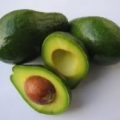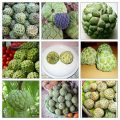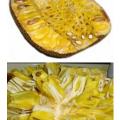Avocado (Persea americana) is a popular and highly nutritious fruit known for its creamy texture and rich flavor. While avocados can be grown from seeds, they are generally unpredictable in terms of fruit quality and characteristics. To ensure consistent fruit production and desirable traits, many avocado growers turn to grafting. Grafting allows the combination of desirable rootstocks with superior scion varieties, resulting in improved disease resistance, enhanced productivity, and optimized fruit quality.
In this guide, we will explore the process of growing grafted avocado trees, from selecting suitable rootstocks and scions to caring for the plants and maximizing yield.
I. Selecting Rootstocks:
- Climate Adaptability: Choose rootstocks that are well-adapted to your specific climate. Avocado rootstocks are typically classified as either Mexican, Guatemalan, or West Indian types, each with different tolerance levels to cold, heat, and soil conditions.
- Disease Resistance: Look for rootstocks that exhibit resistance to common avocado diseases such as Phytophthora root rot and Fusarium wilt.
- Vigor and Size Control: Consider the desired size of the mature tree and select a rootstock that matches your space limitations. Some rootstocks control tree size, making them suitable for smaller gardens or container cultivation.
II. Scion Selection:
1. Desired Fruit Characteristics: When it comes to grafting avocados, the choice of scion varieties plays a crucial role in determining the fruit characteristics and overall success of the graft. Here are some popular avocado varieties that are commonly used as scions for grafting:
Hass: The Hass avocado is the most widely recognized and commercially popular variety. It has a creamy texture, rich flavor, and dark, pebbled skin. It grafts well onto various rootstocks and is known for its high yield.
Reed: The Reed avocado is a large-sized variety with a smooth, green skin and a buttery texture. It has a mild, nutty flavor and is highly sought after for its large fruit size. Reed avocados are compatible with many rootstocks and are known for their vigorous growth.
Fuerte: Fuerte avocados have a smooth, thin, green skin and a delicate, buttery flavor. This variety is well-suited for grafting and is often used as a rootstock as well. It is known for its high tolerance to cold temperatures.
Lamb Hass: Lamb Hass is a cross between the Hass and Gwen avocado varieties. It inherits the excellent taste and texture of Hass avocados but has a larger size and a more elongated shape. Lamb Hass grafts well and is favored for its high yield potential.
Gwen: The Gwen avocado has a smooth, green skin and a creamy, nutty flavor. It is a medium-sized variety known for its excellent post-harvest shelf life. Gwen avocados are compatible with a wide range of rootstocks and are commonly used for grafting.
Pinkerton: Pinkerton avocados have a distinctive elongated shape and a smooth, dark green skin. They have a rich, nutty flavor and a creamy texture. Pinkerton grafts well and is preferred for its high productivity and resistance to sunburn.
Zutano: Zutano avocados have a light green, pebbled skin and a mild, slightly watery flavor. They are commonly used as rootstocks due to their strong and vigorous growth. Zutano is often combined with other scion varieties to improve disease resistance and overall tree performance.
These are just a few examples of avocado varieties that are suitable for grafting. It’s worth noting that different varieties may perform better in specific climates or have different disease resistances. When selecting scion varieties, consider your climate, desired fruit characteristics, and compatibility with available rootstocks for the best results.
2. Flowering and Pollination Compatibility: Ensure that the scion and rootstock selected are compatible in terms of flowering and pollination. Some combinations may have better pollination success rates and fruit set than others.
III. Grafting Techniques:
- Whip-and-Tongue Grafting: This technique involves making matching diagonal cuts on the rootstock and scion, and then joining them together.
- Cleft Grafting: Ideal for larger rootstocks, this method requires creating a vertical cleft in the rootstock and inserting the scion.
- Side Grafting: Suitable for smaller rootstocks, side grafting involves making a horizontal cut on the rootstock and inserting the scion.
IV. Planting and Care:
- Planting Location: Choose a site with well-draining soil and sufficient sunlight exposure (6-8 hours per day). Avocado trees thrive in USDA hardiness zones 9-11.
- Planting Process: Dig a hole that accommodates the root system of the grafted tree. Position the graft union (the point of connection between rootstock and scion) slightly above the soil line to protect it from rotting.
- Irrigation: Provide regular and deep watering to establish the grafted avocado tree. Avocado trees have shallow roots, so frequent but light irrigation is recommended after the initial establishment phase.
- Fertilization: Apply a balanced, slow-release fertilizer to provide necessary nutrients. Follow the manufacturer’s instructions for application rates and frequency.
- Pruning: Train the young tree to develop a strong framework by removing competing branches and maintaining a central leader. Prune sparingly in subsequent years, focusing on dead or damaged branches.
- Disease and Pest Control: Monitor the tree for signs of common avocado pests and diseases such as spider mites, thrips, or root rot. Use organic or appropriate chemical control methods when necessary.
V. Harvesting and Yield Optimization:
- Fruit Maturation: Avocado fruits typically take 9-12 months from flowering to maturity. Harvesting is done when the fruit skin changes color and yields slightly to gentle pressure.
- Yield Enhancement: To increase fruit set and yield, consider hand-pollination techniques, such as transferring pollen between flowers using a small brush or cotton swab.
- Thinning: If the tree produces an excessive number of fruits, thinning them out promotes larger and healthier avocados.
- Post-Harvest Handling: Handle harvested avocados gently to prevent bruising. Store unripe fruits at room temperature until they reach the desired ripeness, and then transfer them to the refrigerator to extend shelf life.
Conclusion
Growing grafted avocado trees offers numerous benefits, including improved disease resistance, enhanced fruit quality, and increased productivity. By carefully selecting suitable rootstocks and scions, mastering grafting techniques, and providing optimal care throughout the tree’s lifespan, you can enjoy a bountiful harvest of delicious avocados. Remember, successful avocado cultivation requires patience, attention to detail, and consistent maintenance, but the rewards are well worth the effort.






